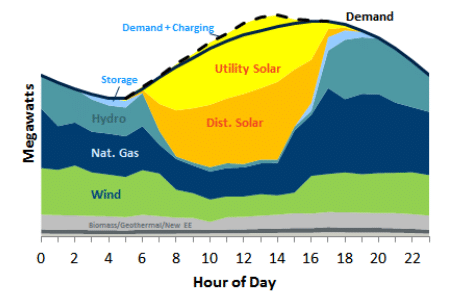If there is one benefit to the study which U.S. Energy Secretary Perry ordered in April, to review whether federal policies and incentives were helping to retire coal and nuclear power plants and whether this would effect electric system reliability, it is that is has spurred a lively conversation on the evolution of the U.S. power grid.
This transformation of the U.S. electric grid, which has been underway for over a decade, has been put into sharp relief by the statements that Perry made, including his contention that “baseload” power is necessary for a stable supply of electricity.
And while the report will not even come out until next month, already there have been multiple reports which debunk the assumptions which Secretary Perry articulated in calling for the report. Earlier this week a report written by Brattle Group and commissioned by National Resources Defense Council (NRDC) exposed one of the main failings of Perry’s logic, by asserting that there is simply no need for “baseload” power on future electric grids.
Brattle’s report patiently explains that the concept of “baseload”, meaning plants that run continually and are not ramped up and down during a 24-hour cycle, is an anachronism of electricity system planning (a point previously articulated in this 2012 article by Chris Nelder for ZDNet). And while it acknowledges that coal and nuclear plants can contribute to reliability, Brattle Group finds that today’s grid has other needs.
“As system planning and electricity market design are modernized, it is becoming increasingly clear that the services and attributes most under-recognized by today’s markets are greenhouse gas emissions in some jurisdictions and operational flexibility,” reads the report’s executive summary.
The report, Advancing Past “Baseload” to a Flexible Grid notes that flexibility has always been important for meeting shifting electricity demand, but that today it is important for helping to integrate the higher levels of low-cost, variable renewable energy sources that are coming online.
It notes that as the grid evolves and more solar and wind are added, policymakers and grid operators are realizing that traditional methods of ensuring reliability must adapt to evolving system needs. To meet these needs, it states that utilities, system planners, policymakers and market designers must better define flexibility needs to support reliability objectives, enable the resources that can supply flexibility to do so, and attract suppliers who can provide innovative and low-cost flexibility solutions.
 One concrete example of the need of flexibility in system operations is California’s famous “duck curve”, in which high PV generation during the day results in the need for rapid ramping in evening hours, which resources such as the state’s last existing nuclear power plant is ill-suited to do.
One concrete example of the need of flexibility in system operations is California’s famous “duck curve”, in which high PV generation during the day results in the need for rapid ramping in evening hours, which resources such as the state’s last existing nuclear power plant is ill-suited to do.
This is hardly the first report to note the essential role that flexible generation has in integrating large volumes of renewable energy. In April, London’s Climate Policy Initiative laid out the essential role of flexible generation in affordably reaching very high levels of renewable energy penetration, in a report titled Flexibility: the path to low carbon, low cost grids.
This content is protected by copyright and may not be reused. If you want to cooperate with us and would like to reuse some of our content, please contact: editors@pv-magazine.com.








By submitting this form you agree to pv magazine using your data for the purposes of publishing your comment.
Your personal data will only be disclosed or otherwise transmitted to third parties for the purposes of spam filtering or if this is necessary for technical maintenance of the website. Any other transfer to third parties will not take place unless this is justified on the basis of applicable data protection regulations or if pv magazine is legally obliged to do so.
You may revoke this consent at any time with effect for the future, in which case your personal data will be deleted immediately. Otherwise, your data will be deleted if pv magazine has processed your request or the purpose of data storage is fulfilled.
Further information on data privacy can be found in our Data Protection Policy.